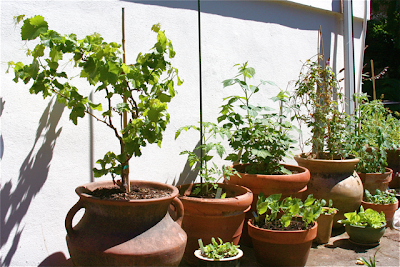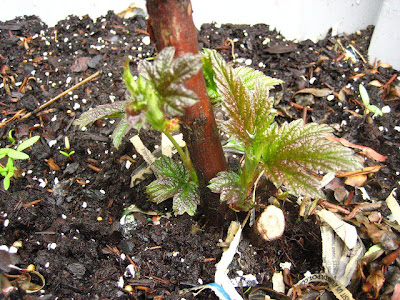 |
| How to grow raspberries |
When I was a child, for some strange reason I always looked down of the raspberry as being a bit of a pauper's food. The were cheap, readily available and usually over-ripe, so you can understand why I would pass my nose at them in favour for something a little more exotic, like a banana or even some strawberries!
 |
| How to grow raspberries |
Large, flavoursome, and proper juicy with just a touch of tartness - I think that's a real word - modern raspberries are now a pleasurable, if sometimes expensive delicacy.
Of course, you can't beat the flavour of homegrown raspberries. And to be fair, they are so easy to grow, and so expensive in the supermarkets, that if you do have space in the garden you would be foolish not to make the effort.
When to plant raspberries
Raspberries are planted any time between November and March, provided the soil is not frozen or waterlogged. They are normally sold as dormant canes.
Which raspberry varieties should I choose?
 |
| Pot raspberries |
Summer-fruiting raspberries - these will fruit between June and early August depending on specific varieties. For the earliest raspberries 'Glen Moy' is a good variety and for delicious flavour you can't beat 'Glen Fyne'!
Autumn-fruiting raspberries - these will fruit between August and October and are ideal for growing in containers on the patio as they don't need supporting. They are also great for beginner gardeners as the pruning is very simple. One of the most reliable varieties is 'Autumn Bliss' , although for something more unusual try growing yellow raspberries such as 'Allgold'.
Primocanes and Floricanes - What's the difference?
Don't let these terms confuse you. Primocane varieties produce flowers and fruit on stems grown in the same year. Most Autumn fruiting varieties are primocanes producing fruit in their first year of growth. Summer fruiting varieties are usually Floricane raspberries which have stems that grow for one year before bearing fruit and flowers. Because floricanes and primocanes produce crops on different aged stems, they require slightly different pruning techniques. Read on to find out how to prune raspberries.
Where to plant raspberries
 |
| How to grow raspberries |
Growing raspberries in the garden
Once you've chosen your site, simply break up the soil with a garden fork and dig in some organic matter such as compost (old or new), well rotted manure or recycled green waste. Create a framework of posts about 1.8m (6ft) high and stretch wires horizontally across them. Set the wires about 60cm (2ft) apart. If you have space for more than one row, make sure the rows are 1.8m (6ft) apart. For summer-fruiting raspberries, plant each cane about 40 cm apart and for autumn-fruiting raspberries plant each cane about 60cm apart. When planting raspberries, place them at a depth of about 8 cm (3in) and gently firm them in and water them well. Once planted, cut the canes to 25 cm from the ground to encourage lots of basal shoots.
Growing raspberries in containers
 |
| How to grow raspberries |
Plant 6 raspberry canes around the edge of the container and gently firm them in and water them. As with all patio plants make sure the compost doesn't dry out and feed your raspberries regularly with a high potash fertiliser throughout the growing season to encourage lots of basal shoots.
Caring for your raspberries
 |
| How to grow raspberries |
As well as feeding raspberries it's important to water them during dry weather for the best cropping. You will find that raspberries produce 'suckers' along their root system so new canes may pop up a fair distance from the main plant. Any that are more than 22 cm (9in) from the main row should be dug up and pulled out (don't worry, severing them won't harm the parent plant). When the plants start to set fruit it's advisable to cover them with netting to prevent the birds eating your delicious crop!
For more information click onto:
BBC: Growing Raspberries
GROW CAPE GOOSEBERRY SEEDS - Physalis peruviana
CAN YOU EAT SEA BUCKTHORN BERRIES?
HOW TO GROW BLACKBERRIES
HOW TO GROW BLUEBERRIES
HOW TO GROW BLUEBERRIES IN POTS AND CONTAINERS
HOW TO GROW BLUEBERRIES FROM SEED
HOW TO GROW GOOSEBERRIES
HOW TO GROW KIWI FROM SEED
HOW TO GROW A MULBERRY TREE
HOW TO GROW THE STRAWBERRY TREE - Arbutus unedo
HOW TO GROW SHARON FRUIT - Diospyros kaki
HOW TO GROW TAYBERRIES
HOW TO PRUNE RASPBERRIES
What is a Fig?
























